August 25, 2024, 4:03 pm | Read time: 19 minutes
The war in Ukraine is causing incredible suffering – not only for people but also for animals, who are often unable to help themselves or are even left behind. Since the fighting began, Animal Rescue Kharkiv has been on the ground to help with the support of the animal rights organization Peta. In this interview, project manager Sylvie Bunz gives PETBOOK an insight into the operations on the front line and what happens to the animals afterward.
Since February 2022, Russia has been conducting what it calls a “special military operation” in Ukraine, which, in reality, is a war that violates the sovereignty of a European country and causes incredible suffering not only among the human population of the country on the Black Sea but also among many animals. These include many dogs and cats, but also several farm animals, especially in rural areas.
Since the beginning of the war, countless rescue operations have been carried out for the animals in the war-torn areas of Ukraine, most of which were left behind in a hurry. One organization that has been actively rescuing animals (and occasionally people) from exclusion zones since the onset of the war is Animal Rescue Kharkiv (ARK), supported by the animal rights organization PETA. PETBOOK spoke to Sylvie Bunz, Head of Special Projects at the animal rights organization, about rescuing animals in mortal danger and a hail of mines.
PETBOOK: Ms Bunz, the organization Animal Rescue Kharkiv, has been working in Ukraine with Peta’s support since the beginning of the war. During this time, there has been a lot of suffering, but also heroes like Alla Pushkarchuk. She was a young woman who sacrificed her safe life to join the military and was killed on the front line in April 2024.
Sylvie Bunz: “Yes, that’s a story you can’t forget. When I saw the video with her obituary, it made me cry. It illustrates what it means for people in Ukraine to live in war, be on the front line in military service, and help animals.
Ukraine has a law that permits a surviving member of a married couple or a parent-child pair serving in the military to leave service with honor if their partner or parent falls in battle at the front. Simply because this war has already brought enough victims. Alla’s husband then said that he was leaving the Ukrainian military. And then he stood on the doorstep of ARK in Kharkiv and now heads our second-largest deployment team.”
What does a mission like that look like?
“He’s out on the front line every day, doing what was so important to his wife: To continue saving animals for her. What’s truly admirable is that he maintains an incredible sense of humor despite his immense pain. With incredible strength, the emergency services manage to endure or suppress the suffering – I’m not in a position to judge. Perhaps a little of both. And they keep going every day. That really is very admirable. The fact that they were separated, that fate allowed this to happen – there shouldn’t be such a thing.”
Rescuers need a gut feeling of how to capture frightened animals
In many other videos from Animal Rescue Kharkiv, we have seen that some animals were extremely frightened and showed teeth. How do you generally go about rescuing injured animals? After all, you also have to protect yourself.
“Yes, it’s sometimes very dangerous. It’s important for the animal rescue team that everyone has a military background. We also work very closely with the military.”
What skills does a rescue worker in Ukraine need?
“Chains of command must be followed in the field because it’s very risky. Every step can be life-threatening. On the other hand, of course, they bring a lot of skills and a great gut feeling for how to catch animals that are frightened and when you can’t do it. If you’re in a wrecked house and you know, ‘I’ve got an hour now to save as many animals as I can’ – you don’t have that hour to calm a dog or cat down so they can be handled. The goal is to rescue as many animals as possible. That’s why everyone in the rescue teams has learned to use the blowpipe to anesthetize animals.”
Saving lives first – we take care of the soul in the project
How do the emergency services go about rescuing animals?
“First, you try to get close to the animal calmly. You have to be careful, for example, that a dog doesn’t suddenly come up and possibly bite. When afraid, dogs usually want to increase the distance and move further back into cover. At such a moment, they could also snap. If a dog were to bite, a team member with a bite wound would not be able to continue the operation. Securing people comes first. Therefore, first, stay calm, breathe, and approach slowly. Put a lead around the dog’s neck, and hold cats with gloves. Dogs are then carefully picked up, carried to the car, and into the box. Cats are often secured directly in boxes.
Our guiding principle is clear: saving lives comes first – we address the soul’s healing within the project. Because rescuing is much more than just getting the animals out of the rubble at the front. One thing is very dangerous, but then comes the big job: helping the animal to live as long and healthy a life as possible, free from worry and with dignity.”
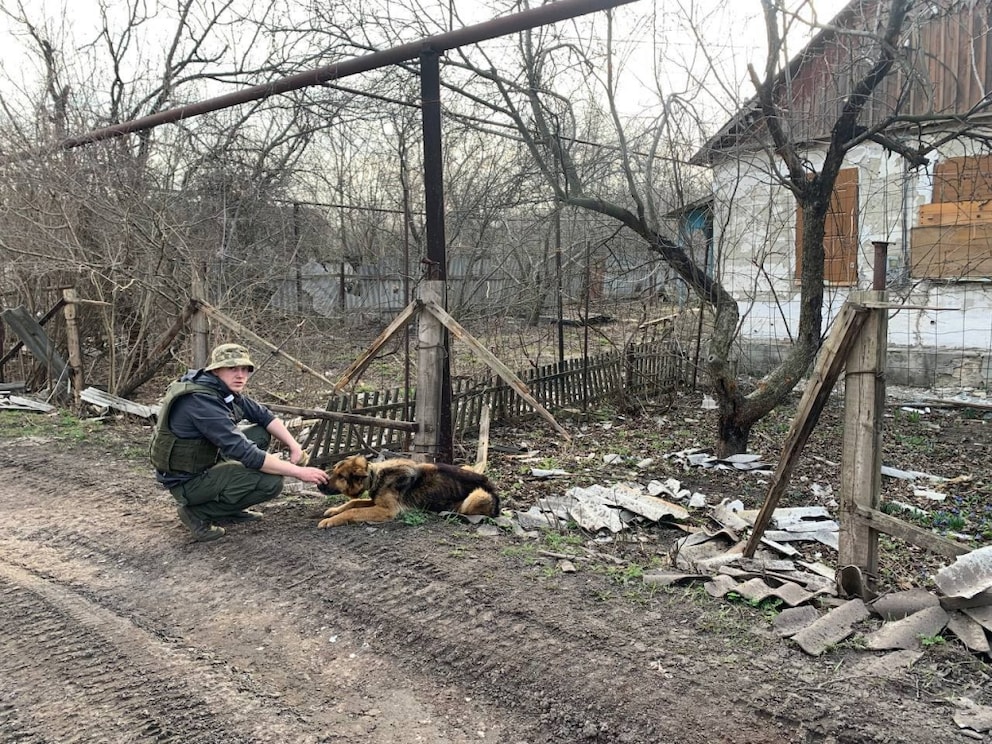
Animal Aid in Ukraine has already rescued 17,000 animals
How do the animals behave during the first few hours in the shelter near Kharkiv? I can imagine that they first have to be separated and left alone.
“That depends on the individual animal. However, we have gained experience over time. So far, we have rescued 17,000 animals and given them a good life. 1300 are currently still on site, and each animal is, of course, as individual as each of us humans. And we also experience this range.
Some dogs are cool from the very first moment, so let us touch them. They are happy, eat, drink – everything is fine. Of course, we also have dogs so frightened that they increase their distance – this can look different. We let these animals come down for the time being. But you soon notice when they get along with other dogs. Then, you can carefully try to bring them together and introduce the newcomer to a dog that is already more relaxed. This will resolve many issues.
Most of them are trusting and very sociable after a few days once the excitement has died down. From the dogs’ point of view, this is all perfectly understandable. Their whole life changes in a short space of time, and they first have to understand this and come to terms with the situation. All newly arrived animals go into quarantine internally – together, as they were rescued, or they go to the clinic, depending on how the animals are doing.
“They hide and tremble”
Are there also dogs that are severely traumatized? How do you deal with them?
“We actually also have scared dogs that are really severely traumatized and anxious after what they have experienced. Not all dogs go forward to defend themselves and create distance by adopting an aggressive stance. Many immediately retreat. They hide and tremble. They want peace and distance. We try to approach these dogs with a lot of love and calm, to wait and not force them to do anything. We give them food, water, and, if necessary, treatment. If necessary, we put them under anesthesia with a blowpipe for the latter. This is because pain from injuries can also be the cause of behavioral problems as well as psychological scars.”
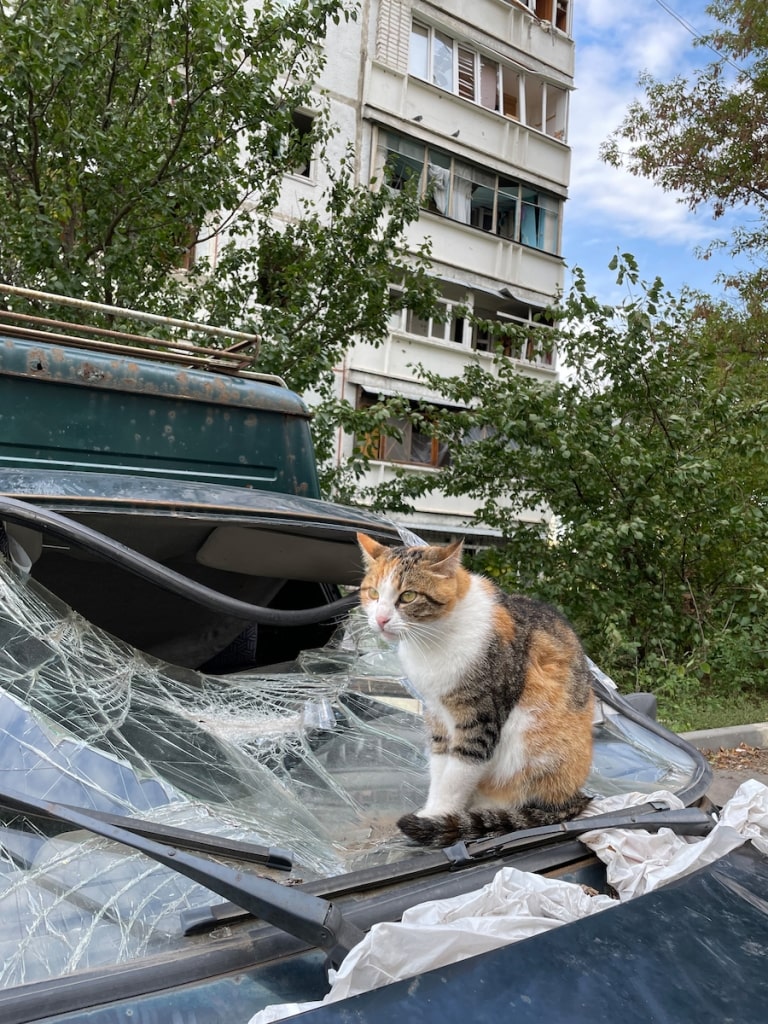
“Animals quickly sense that you mean well for them”
How do you deal with injured dogs?
“Unfortunately, we have a lot of seriously injured dogs that we rescue from distress. Many injuries are caused by the war, for example, by falling debris or splinters from bombs. These carry jammed metal parts that stick up in all directions. On impact, they fly in all directions. Such bombs cause incredibly sharp injuries and even sever bones. This is why we see so many open fractures, which, of course, need to be treated.
If an animal is super scared and in pain, you can talk it through this fear, but it doesn’t want to be touched: That won’t work for a while. This means that we put the animals under anesthesia using a blowpipe. We can then administer painkillers, insert a drip, or carry out the necessary operations. With less or no pain, the panic and insecurity of many animals disappear, and they quickly realize that we mean well for them.”
What happens to the animals after acute care?
“As Ukraine is still a third country, it takes at least four months for the animals to enter the European Union. We have places on site where the animals can receive rehabilitation and further training. We even have a dog trainer for this purpose in the project. Some dogs are so severely traumatized that they have been looked after for two years by trainers who specialize in dogs with fear. So it can take a long time to place them. To do this, the team has to find people who are used to dealing with sensitive dogs. Such animals would not get along in a large family in the middle of the city. This is why the placement process has to be very sensitive. Most of the animals are placed via ARK’s partner animal shelters in Europe.”
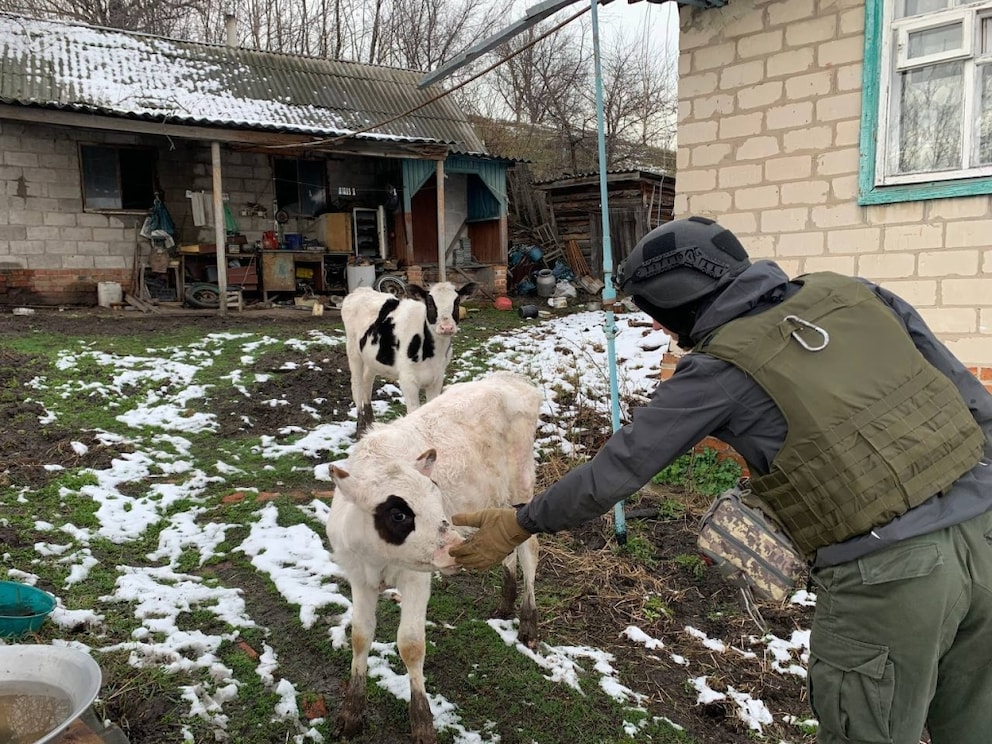
Animal rescue in Ukraine: “Who had a dog prepared for departure at the beginning of the war?”
Do animals go back to their owners?
“At the beginning of the war, we could still return around 60 percent of them to their owners, who now live in Europe. In the beginning, they had fled and didn’t know whether they could take their animals with them. The dogs were also not prepared for departure. Why should they be? Their owners didn’t want to leave.
The animals initially stayed in the country and came into our care. The other 40 percent were then placed via partner animal shelters. We are currently unable to reunite 60 percent of the animals because there are so many animals from the front line. The situation there is so dramatic that we are currently achieving 25 to 30 percent rehoming – even within Ukraine. This is because many people are fleeing to the west of the country.”
How does the cooperation with the animal shelters work?
“With good communication and a lot of honesty. We tell the partner animal shelters: ‘Three dogs are coming, they’re great, it’ll be easy’ or: ‘This one is a bit more anxious. This one needs a bit of time. Once he realizes that everything is fine, he’ll open up.
And that’s the big responsibility behind it. The more information we provide from the outset, the easier it is to find the right people for the animals. Only then do we consider an animal to be truly rescued. Animal Rescue Kharkiv provides this information on the animals’ journey – as well as all the papers and information about their medical and treatment history.
Ukraine hotline rings continuously
In the meantime, however, the military certainly knows that the people will not be coming back anytime soon. Can’t the animals be evacuated at the same time, or is there no time for that?
“They often do that. Our experience is that the Ukrainian military is really great in this respect. They are very kind to animals. They take the mother duck with the chicks in a box and the cat under their arm if they can. But of course, there are just too many animals to save them all. Your main task – and it has to be said honestly – is not to rescue animals but to evacuate the villages and, of course, to fight, as bitter as that sounds.
Some people flee and take at least a few animals with them. On the other hand, others keep many less ‘mobile’ animals, especially in rural areas, such as three dogs, seven cats, chickens, two sheep, two goats, and two horses. It’s impossible for the military to take them all with them.”
What happens to the animals that are left behind in Ukraine?
“The military then calls us so that we know before every rescue mission. There is also a hotline that rings constantly. On the one hand, refugees call and say: ‘Please, please, I’m from a village, my animals are still there, I couldn’t take them with me. Please get my animals. I can’t accommodate them at the moment.’
Residents who have stayed in the villages also call. The elderly, in particular, often stay because Ukrainians are very attached to their homeland, their region, and, of course, their small house and garden – because that is all they have. When the fronts get closer, things get dicey. ARK then takes people and animals out in consultation with the military.
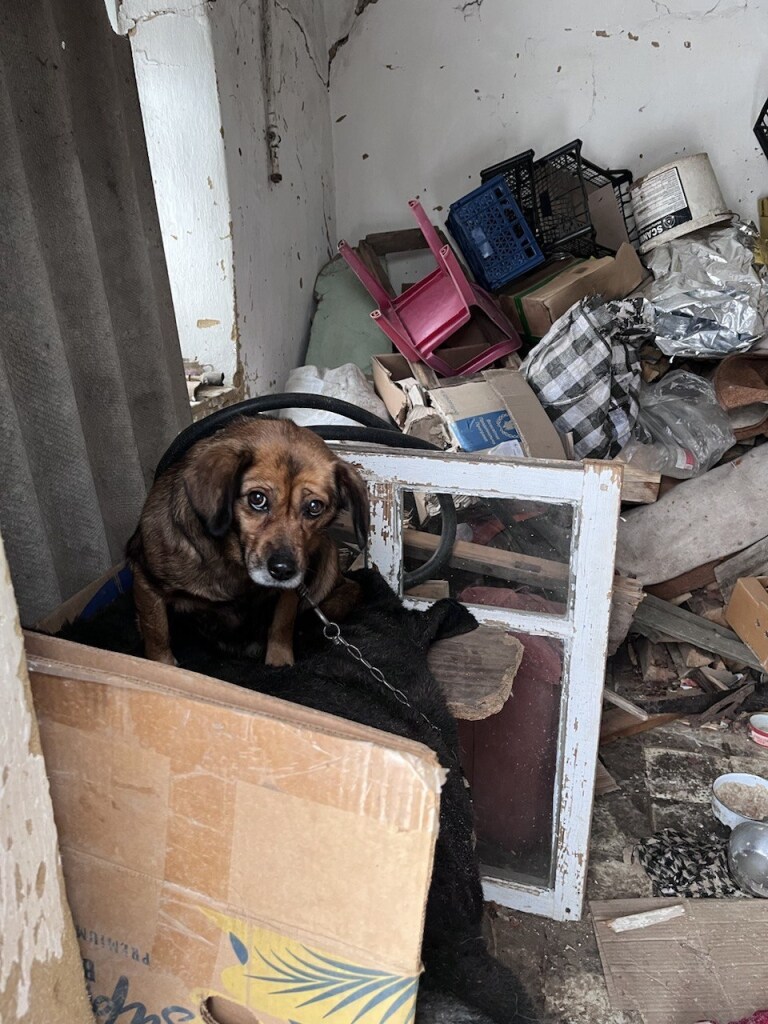
“We currently have between 300 and 400 sheep, goats, cows, horses, and rabbits”
How does a mission under fire work?
“The Russian drones shoot at anything that moves. Our vehicles are often destroyed or badly damaged. It’s extremely admirable how the team manages this every day. And that’s why military experience is so important. When the head of operations calls out: ‘Take cover,’ everyone takes cover – even if they haven’t seen the danger themselves yet.
ARK often parks the cars somewhere at the edge of a forest, and the team prefers to walk two kilometers in camouflage clothing to help the animals. They know that there is no protection on the road. In fact, some areas have hardly any roads left intact.”
“A bomb fell directly on the Ukraine shelter”
What was the last big rescue operation?
“Recently, the animal rescuers were in a village where there was a small apartment building. The neighbors said: ‘There are dogs in the stairwell. The house is unoccupied, but there are lots of frightened animals here. Can you come?’
In the end, it wasn’t dogs at all, but sheep that were in the remains of a stairwell. And it’s really not easy to carry eight sheep two kilometers to the car. They were so scared and didn’t want to walk. And it was 38 degrees.”
But the sheep made it?
“Everything is fine; all the sheep are with us at the project. We currently have between 300 and 400 sheep, goats, cows, horses, and rabbits at the animal sanctuary. In the early days of the war, things looked very different. We had to find a solution from one day to the next and rented empty stables to house animals. It was a makeshift solution, but it worked well for many months. In the first days of the war, a bomb fell directly on the Animal Rescue Kharkiv shelter. Almost all of the 400 dogs died. This meant there was nowhere left for the organization to take the animals. The horse stables were a quick and pragmatic solution.”

Animal rescue in Ukraine: “We need 85 employees to care for all the animals
Where do the animals go?
“We have now established an important project that is strategically located and currently under construction. We have been looking for a suitable site for a very long time because Kharkiv’s location is difficult. But we reminded ourselves: we are PETA, and PETA acts courageously wherever help is needed, even in the face of danger. So, we have now obtained 14 hectares for a favorable lease.
In the meantime, we have already accommodated around 300 so-called farm animals there. They are very happy about the shade and the space outside in the summer heat. The dogs will also gradually move in. ARK is currently building large, fenced-in areas there with the support of Peta. Fortunately, we have found this place to build the project. We hope we can stay there – but in the current situation, no one can answer that for the future.”
“Animals always live in the now”
How many people are currently involved in the project?
“When the war broke out, about ten people were actively working at ARK. Volunteers managed everything. There are now around 85 employees on site. One thousand three hundred animals need to be cared for every day. We also run a veterinary clinic and a castration project.
You can really see the suffering in the animals’ expressions in the pictures, especially when a dog or cat is injured. Can you say when that starts to get better?
“It’s very, very different. Like us humans, animals also differ in their resilience. But we often see that the suffering in the eyes of the animals disappears more and more as soon as they have settled into the project, some calm has returned, and they are treated with respect. Animals are truly admirable. They always live in the now.
But there will probably always be dogs that react more anxiously to sudden, unexpected noises. You have to be prepared for that, I think.”
Is there a point in time when you can say they have come to terms with it? Of course, they won’t forget it completely …
“It’s like all living beings that have experienced terrible things. There are moments when a trauma comes up again. This usually happens to all animals that have been confronted with hardship – in whatever form – or with unloving treatment. All animal welfare workers know this: in one situation, the animals are still relaxed, and there are always moments when they are reminded of something.”
“A fearful dog that was on a chain tends not to become a family dog”
If we’re talking about animals that have been traumatized and come from rural areas, it would probably be a huge change if they were to move to a big city. Can the animals be placed there?
“The staff at Animal Rescue Kharkiv try to place the animals according to how they behave. A fearful dog that has spent many years on a chain in the countryside and has never known anything tends not to become a family dog that lies under the table in a café. However, some dogs have lived homeless in a small town and are familiar with everyday occurrences. These are often all-rounders in life.
Animals that have experienced nothing are much more difficult. They were born, so to speak, and lived in the same place without gaining much experience. They often bring ‘baggage’ that you have to work hard on throughout their lives. Not everyone gets used to living with one person. But many can be introduced to life well. Most of the animals positively amaze us with how sociable, sweet, and cheerful they are – they’re just great.”
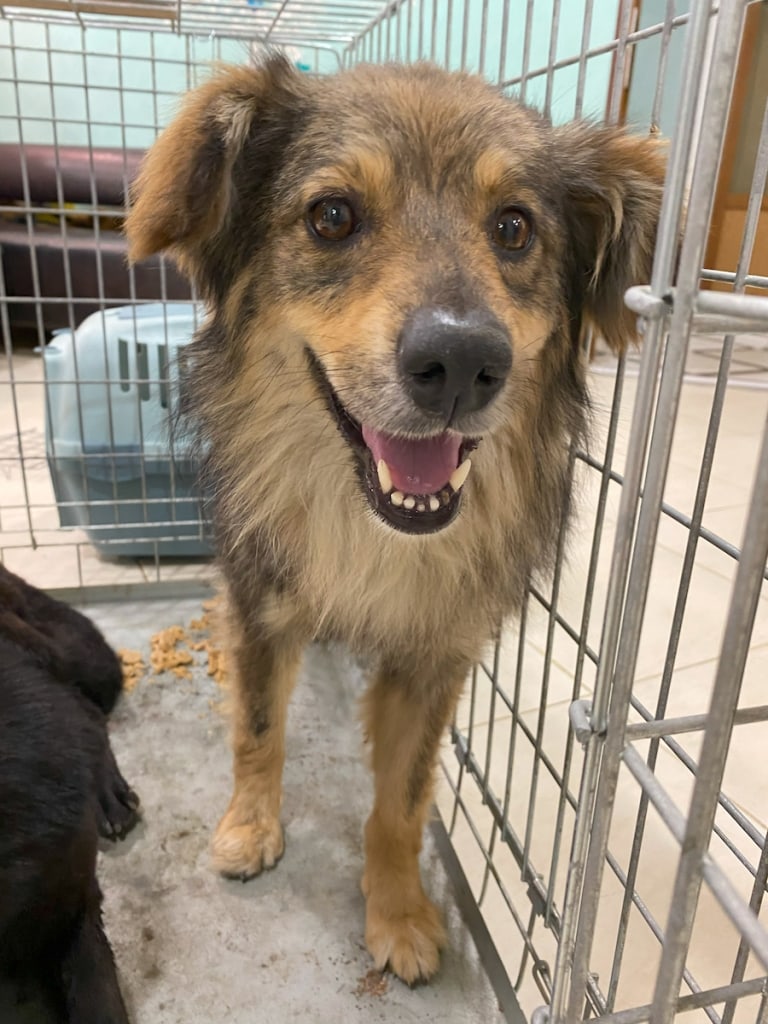
Freight forwarder traveled to Ukraine: “I know I won’t be coming back, but this is my job”
Is there a story that you always have to think back to?
“Yes, from the early days of this war. For us at Peta, bringing animal food into the country was important from the beginning. That was the first thing that was missing and became expensive. I immediately called a good partner of ours who produces vegan animal food for Peta and organizes the transports. He promptly said: ‘I’ll help you right away. But we need a shipping company to drive over.’
But which German freight forwarder would drive to the war zone in Ukraine? So, we contacted Ukrainian haulage companies that had drivers in Germany. At that point, it was clear that anyone who was currently traveling in Europe and going to Ukraine would most likely not get out.
Nevertheless, we found a hauler who was prepared to take 20 tons of feed to Ukraine by truck. He said: ‘I’ll drive to the front and then go straight to the military and fight for my country. I’m doing it for the animals. I know I won’t be coming back, but this is my job.
That was something, I found incredibly touching at the time, and I think about this man more often. I wonder if he’s still alive and if he’s still on the front line in military service and fighting there.”
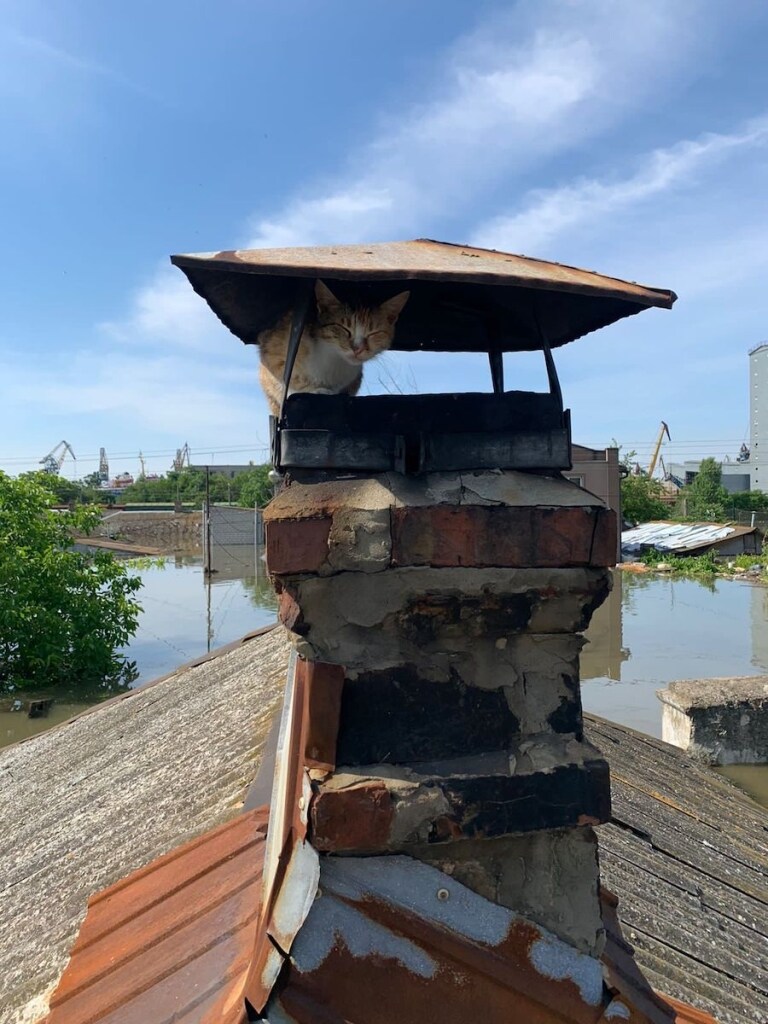

Olivia Jones on her work for Peta: ‘Back then, we shut down an entire KFC restaurant on Reeperbahn for a few hours.’

One Month After the Earthquake in Myanmar, Thousands of Animals Are Struggling to Survive

Dog Trainer Observes Street Dogs for Years: “Puppy Books Need to Be Rewritten!”
“Roofs floated by, with two cats sitting on top”
A special case was the 2023 Kherson dam burst and subsequent flooding. I can also imagine it being incredibly difficult to save animals in this situation.
“Those were unimaginable masses of water. Entire villages and stretches of land were simply washed away. As soon as we heard about it, we got to work. With Peta’s help, ARK immediately bought rubber dinghies with engines, sent teams to Kherson, and contacted the local military to rescue animals and people from the water.
You can’t imagine the situation there: Roofs floated by, with two cats perched on top. Dead people and dead animals were floating among them. The water itself was also dangerous, as it had swept away entire villages from which the Russians had only just retreated. And when they do that, they usually mine these areas. So the rescue team didn’t know what was in the water: perhaps mines, fences, pieces of metal, or electricity pylons that had been washed away? The water swept away everything that had previously been alive.
The animal rights activists worked tirelessly. Together with other organizations from the region, they took animals from each other, housed them, and distributed food nonstop. It was an admirable effort on top of the normal day-to-day dramas.”

